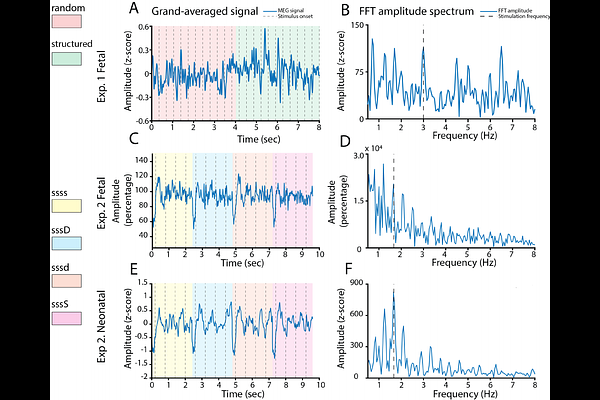Frequency tagging evidence supports perceptual separation of rapid stimuli in human fetuses

Frequency tagging evidence supports perceptual separation of rapid stimuli in human fetuses
Frohlich, J.; Moser, J.; Metaxas, D.; Sippel, K.; Batterink, L.; Preissl, H.
AbstractIn early human development, perceptual processes grow faster with maturation, as inferred using the duration of the attentional blink and multisensory integration window. The consequences of this developmental trend for sensory-cognition in fetuses are unclear: does the fetus perceive rapid stimuli as discrete events or, rather, one fused stimulus? We addressed this question using frequency tagging in two experiments with rapid auditory stimuli while neural responses were recorded in the third trimester with fetal magnetoencephalography (MEG). Our results are the first successful demonstration of frequency tagging in the fetal MEG amplitude spectrum and show that the fetal cortex generates separate neural responses to discrete auditory stimuli in both experiments, and similar results were also obtained when one experiment was repeated in newborns. While we cannot rule out perceptual fusion of rapid stimuli in higher-order association cortices, our results weaken the hypothesis that fetuses fuse rapid auditory stimuli into a single prolonged percept. Finally, our work points to frequency tagging analysis as a solution which avoids the uncertainties surrounding immature neural response latencies in time-domain analysis of fetal MEG.